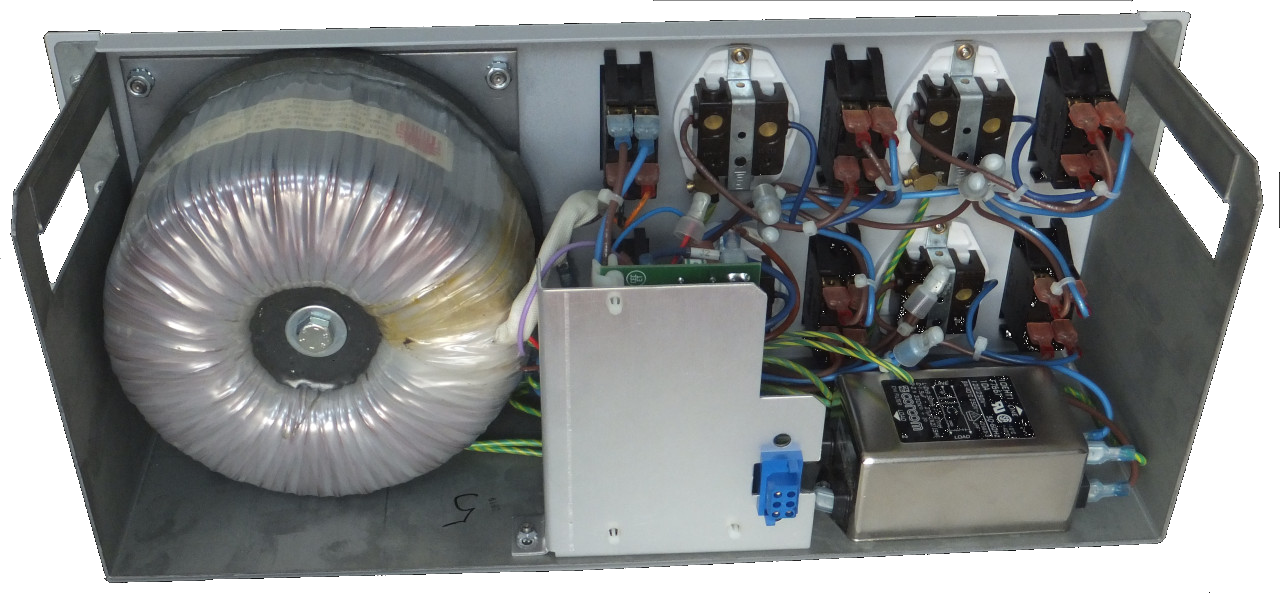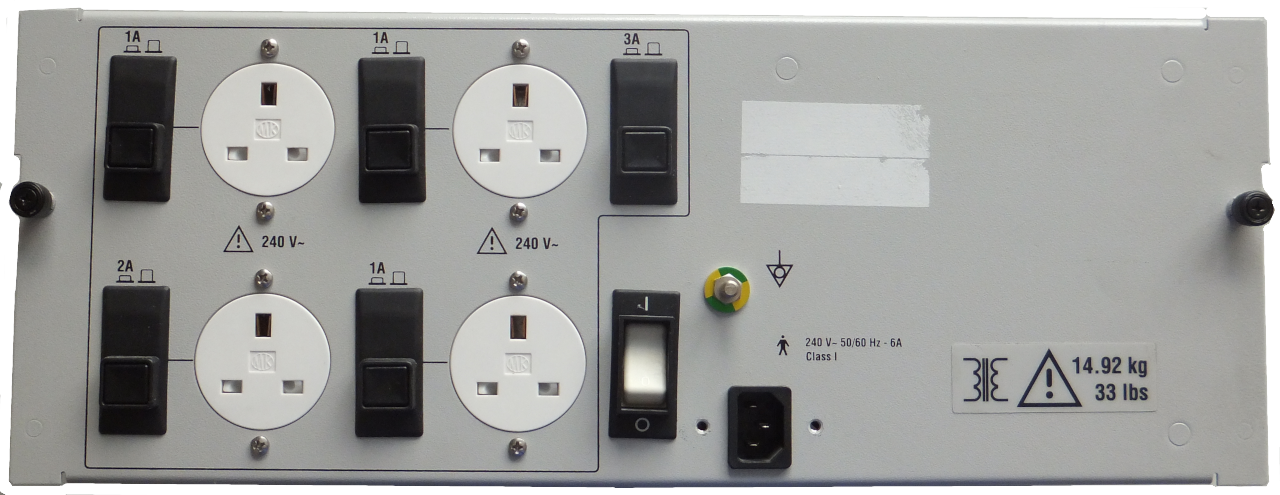Power supply
The hospital may receive power from more than one provider in order to ensure resilience. The incoming supply is monitored and in the event of failure, an 'automatic transfer switch' switches to a local generator (Fig.1). Those areas of the hospital which do not require this emergency backup will lose power completely (Fig.1 - circuits).
Simplified view of a hospital power supply
Starting a generator takes time (15-30s is not unusual) and so even areas which have generator protection will lose power for a brief period. Where this is unacceptable, an uninterruptable power supply (UPS) is used. This device uses a bank of batteries as an alternative power source. A UPS can respond very rapidly meaning that there is no noticeable break in the power supply, but even with large battery banks, it cannot provide power for more than a short time. A UPS is useful to cover the generator startup time, but cannot be relied upon for more than this. Whilst on UPS, disconnect all devices which are not critical; all too frequently, generators have been known to fail and every minute of power is useful. Patient warmers in particular (air and fluid) are not essential, but draw significant amounts of power.
So far, this description has described the precautions to ensure that the power supply is not interrupted (i.e. resilience). Safety is equally important (see 'Electrical hazards') and this will often involve techniques which do cut the supply (fuses and circuit breakers). In order to alleviate this risk, critical areas must have two separate supply circuits (Fig.1 - A&B). Tripping of a circuit breaker will cut power to half of the sockets in the area (e.g. 'A'), leaving 'B' available. It is absolotely essential to understand what needs to be done in the event of such a failure.
- Something has caused the circuit breaker or fuse to trip.
- The faulty device will be on the circuit which has shut-off.
- DO NOT start moving devices to the 'good' circuit or you will lose this too and be faced with a total supply failure
- The only devices to move are those which are critical to support patients.
- Where a critical device is on the failed circuit, but has its own battery backup, consider replacing it rather than moving it to the 'good' circuit; it might be the faulty device.
- From the 'good' circuit, unplug all non-critical devices to avoid overload.
For those interested, much more detailed information is available here.
The anaesthetic machine should be connected to an isolated and UPS protected circuit, along with all monitors and pumps. This will provide 240VAC at 50Hz with the highest degree of protection.
Machines should also have their own battery backup and electrical isolation. Fig. 2 shows an example of the power supply from an anaesthetic machine which provides its own isolating transformer (left of the picture).

All UK plugs come with a fuse, but the machine will contain its own fuses to protect against internal faults. If the manufacturer makes additional power outlets available, then these will also be protected (Fig. 3 - front-view of the PSU above showing re-settable fuses).

Before checking the machine, make sure that it is plugged in and switched on and that the batteries (if present) are charging.
